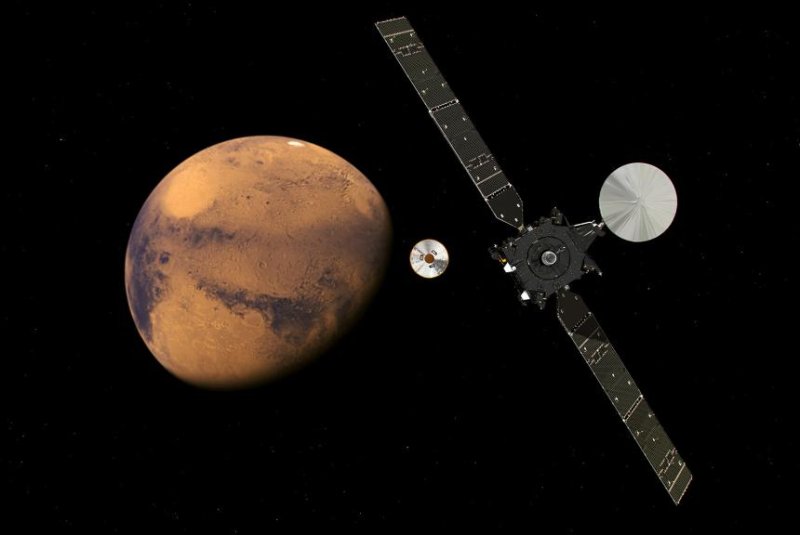PARIS, Oct. 19 (UPI) -- Engineers with the European Space Agency are still analyzing data related to the touchdown of Schiaparelli, the Mars lander.
The silence suggests failure, but officials are still in an upbeat mood as the Trace Gas Orbiter was successfully slung into orbit around the Red Planet on Wednesday.















